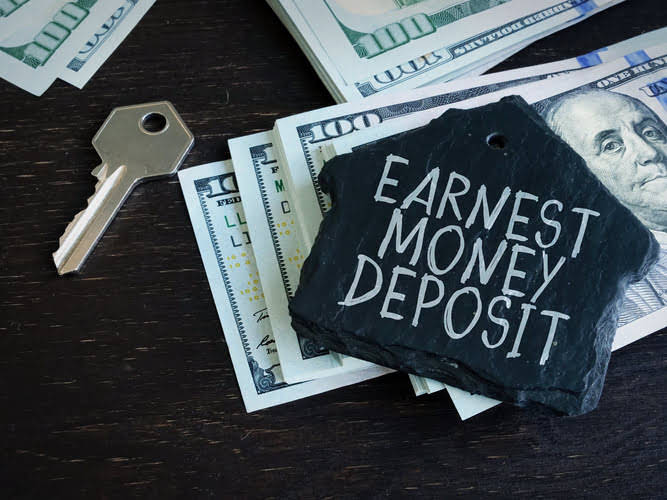Content

It means that if the company pays back the debt of $50,000, it will have $80,000 remaining, which translates into a profit of $30,000. Similarly, if the asset depreciates by 30%, the asset will be valued at $70,000. This means that after paying the debt of $50,000, the company will remain with $20,000 which translates to a loss of $30,000 ($50,000 – $20,000). However, operating leverage directly influences the sales level and is called first-order leverage, whereas FL indirectly influences sales and is called second-order leverage.
Most of these companies, many of which are from Hollywood, forgot that they still had to repay their debts even if the projects they financed with the funds failed. To use leverage successfully, a company must use realistic projections, sound management decisions, common sense, and an unbiased appraisal of the risks. It is mostly used to boost the returns on equity capital of a company, especially when the business is unable to increase its operating efficiency and returns on total investment. Because earning on borrowing is higher than interest payable on debt, the company’s total earnings will increase, ultimately boosting the earnings of stockholders. However, once those investments started paying off, Verizon’s financial leverage ratio leveled out and returned to a lower, more reassuring figure.
In either case, if the value of the asset increases and the interest rate on the loan is lower than the rate of increase in the asset’s value, the owner of that asset will have a bigger return. However, if the value of the assets decreases, that means that the owner will have a greater financial loss. Banks’ notional leverage was more than twice as high, due to off-balance sheet transactions. Consumers in the United States and many other developed countries had high levels financial leverage of debt relative to their wages, and relative to the value of collateral assets. When home prices fell, and debt interest rates reset higher, and business laid off employees, borrowers could no longer afford debt payments, and lenders could not recover their principal by selling collateral. Banks in most countries had a reserve requirement, a fraction of deposits that was required to be held in liquid form, generally precious metals or government notes or deposits.
Leverage not only magnifies your profits, it has the same effect on losses. For example, suppose you borrow excessively to purchase new manufacturing equipment to increase production. You subsequently discover that the public has soured on your product and you must reduce prices below your costs, which includes interest costs that raise your breakeven point. Leverage has caused you to increase production on a product that loses money on each sale. As your losses mount, your cash flow dries up, you miss interest payments, and you find yourself in bankruptcy court. Leverage inhibits future cash flow because you must set aside a certain amount of ongoing profit for principal and interest payments. Limited cash flow often causes companies to avoid taking new risks or making additional investments.
What Is Leverage In Finance And What Is The Formula?
Under favorable conditions, financial leverage can lead to higher returns than an individual or business may otherwise see. Financial leverage which is also known as leverage or trading on equity, refers to the use of debt to acquire additional assets. Total debt, in this case, refers to the company’s current liabilities and long-term liabilities . If reading spreadsheets and conducting fundamental analysis is not your cup of tea, you can purchase mutual funds or exchange-traded funds that use leverage. By using these vehicles, you can delegate the research and investment decisions to experts. Investors who are not comfortable using leverage directly have a variety of ways to access leverage indirectly.

Financial leverage is measured using leverage ratios and a company’s financial data found on its balance sheet, cash flow statement, or income statement. You can measure how much of a company’s capital structure and working capital (capital a business uses in its day-to-day operations) are made up of debt using these ratio formulas. At an ideal level of financial leverage, a company’s return on equity increases because the use of leverage increases stock volatility, increasing its level of risk which in turn increases returns. However, if a company is financially over-leveraged a decrease in return on equity could occur.
From a financial point of view, financial leverage is calculated as total debt /shareholder equity. Traders also aren’t limited to the same requirements as average investors. For example, depending on the Forex broker a trader uses, they could request orders of 500 times the size of their deposit. That discrepancy between cash and margin can potentially increase losses by huge orders of magnitude, leaving it a strategy best left to very experienced traders. Leverage can offer investors a powerful tool to increase their returns, although using leverage in investing comes with some big risks, too. Leverage in investing is called buying on margin, and it’s an investing technique that should be used with caution, particularly for inexperienced investors, due its great potential for losses.
Combining Operating And Financial Leverage
Meanwhile, based on information through the fourth quarter of 2020, leverage at property and casualty insurers stayed at low levels relative to historical averages. A minor way that leverage affects net profit relates to asset sales. When you borrow money to pay for a building or piece of equipment, the value of the item is an asset and the debt is a liability. If you sell an asset, the money you receive is recorded as one-time unusual revenue. However, the money received is mitigated by amounts that you have to use to pay down debt at the time of the sale.

These financial leverage ratios allow the owner of the business to determine how well the business can meet its long-term debt obligations. You have to be able to do trend and industry analysis to be able to determine how well you are managing your debt position. The equity ratio is calculated by dividing total equity by total assets.
Management Accounting
While delinquencies have generally been flat, some uncertainty remains about whether the credit quality of bank loans will hold up after loss-mitigation programs end and government support runs out. In response to a set of special forward-looking questions in the January 2021 SLOOS, banks, on balance, reported they expect loan quality to deteriorate for most loan categories later this year. Nevertheless, banks’ willingness to lend is apparently increasing in some cases. Banks, reflecting changes at the largest banks, generally reported that they had eased lending standards during the fourth quarter of 2020 for C&I loans to large and medium-sized firms (figure 3-4). Ltd wants to know its financial leverage; the company had a debt of $100,000 and shareholder’s equity of $40,000.
Fitch Affirms RealPage on Proposed Add-On 1L Term Loan for HomeWiseDocs Acquisition – Fitch Ratings
Fitch Affirms RealPage on Proposed Add-On 1L Term Loan for HomeWiseDocs Acquisition.
Posted: Fri, 10 Dec 2021 08:00:00 GMT [source]
A capital requirement is a fraction of assets that is required to be funded in the form of equity or equity-like securities. A reserve requirement is a fraction of certain liabilities that must be held as a certain kind of asset . A capital requirement is a fraction of assets that must be held as a certain kind of liability or equity .
WACC is essentially the overall average interest an organization owes on the capital it has borrowed for leverage. If the owner of ABC Art Supplies wants to know their current financial leverage ratio, the first step they would need to complete is to add together all of the debt listed on their balance sheet above. While a business with high financial leverage may be considered risky, using financial leverage also offers benefits, such as a higher return on investment . FInancial leverage can also appeal to stockholders who may see an increase in their initial investment as well. The reasons for using financial leverage may differ from individuals to firms. Companies may want to acquire property and equipment to increase shareholder value, but individual investors might use leverage to increase their return on investment. Equity owners of businesses leverage their investment by having the business borrow a portion of its needed financing.
CMS A content management system software allows you to publish content, create a user-friendly web experience, and manage your audience lifecycle. Construction Management This guide will help you find some of the best construction software platforms out there, and provide everything you need to know about which solutions are best suited for your business. Borrowing money allows businesses and individuals to make investments that otherwise might be out of reach, or the funds they already have more efficiently. For individuals, leverage can be the only way you can realistically purchase certain big-ticket items, like a home or a college education. If you have good credit, you may qualify for a low-interest personal loanto get cash to invest. Personal loans are typically unsecured, so you don’t have to use property as collateral. But they do charge interest and have relatively short repayment terms, meaning your investment would have to earn at least enough to cancel out the interest you’d accrue quickly.
During times of recession, however, it may cause serious cash flow problems. The company has issued 10% preference shares of $500,000 and 50,000 equity shares of $100 each. The average tax applicable to the company is 30% and corporate dividend tax is 20%.
Construction Management
Financial leverage refers to the portion of a company’s operations financed with debt. Being highly leveraged means that you have a significant amount of debt in use. While debts used to generate revenue can boost revenue and profit over time, unproductive or excessive debt can inhibit profitability. An even more extreme case is produced by letting Widget Works, Inc. have fixed costs of $10,000 and variable costs per unit of $1.00, while Bridget Brothers has fixed costs of only $100 and variable cost per unit of $1.99. Observe that now Widget Works’ fixed costs are 100 times Bridget Brothers’, and that its variable costs are just barely over one-half of Bridget Brothers’.
They can invest in companies that use leverage in the normal course of their business to finance or expand operations—without increasing their outlay. In the case of FL, the higher the amount of debt, the higher the FL. High leverage may be beneficial in boom periods because cash flow might be sufficient.
Fitch Rates Los Angeles, CA’s WIFIA Loan ‘AA'; Outlook Stable – Fitch Ratings
Fitch Rates Los Angeles, CA’s WIFIA Loan ‘AA'; Outlook Stable.
Posted: Tue, 21 Dec 2021 19:23:00 GMT [source]
Therefore, the dividend payable to preference shareholders is regarded as a fixed charge when calculating financial leverage. In contrast, if funds are raised through equity shares, then the dividend to be paid is not a fixed charge. In fact, financial leverage relates to financing activities (i.e., the cost of raising funds from different sources carrying fixed charges or not involving fixed charges).
How Do You Interpret Financial Leverage?
Leverage refers to the use of debt to amplify returns from an investment or project. Rosemary Carlson is an expert in finance who writes for The Balance Small Business. She has consulted with many small businesses in all areas of finance. She was a university professor of finance and has written extensively in this area. This is because there may not be enough sales revenue to cover the interest payments. Based in Greenville SC, Eric Bank has been writing business-related articles since 1985. Financial debt can be complex with stringent regulations and affirmative/negative covenants .
As a result, they lever the return on the common stockholders’ investment upward. CLO securitization has grown rapidly in recent years, with investors attracted by higher yields. In addition, a record volume of CLOs was refinanced or restructured, as CLO managers sought to lower their liability costs amid tighter market spreads. Meanwhile, CLO fundamentals have improved, following a notable deterioration in 2020. While certain collateral metrics, such as average loan ratings or holdings of triple-C-rated loans, are worse than their pre-pandemic levels, they have improved significantly relative to mid-2020. Securitization allows financial institutions to bundle loans or other financial assets and sell claims on the cash flows generated by these assets as tradable securities, much like bonds. Examples of the resulting securities include CLOs , ABS , CMBS, and residential mortgage-backed securities .
- You can assume that the company falls under the tax bracket of 40%.
- Leverage is a financial tactic to multiply gains and losses, accomplished through borrowing capital on existing assets.
- Just know going in that accompanying costs can escalate, the economics of financial leverage can be exceedingly complex, and financing risks can be higher for companies using financial leverage.
- Alternatively, the company may go with the second option and finance the asset using 50% common stock and 50% debt.
- To make it readily apparent something that is wrong with the typical description of operating leverage, a very simple example is used in Tables 1 and 2.
- The financial leverage equation is a very important and sensitive thing as borrowing fund helps a company to grow and increase profit, but there is also rick involve, which can lean to company potential loss.
- Basel I categorized assets into five risk buckets, and mandated minimum capital requirements for each.
Even with a great deal of collateral, borrowing big means risking big. Interest rates ensure that the strategic discussions around expanding leverage take into account the risk and return trade offs. Financial leverage ratios, sometimes called equity or debt ratios, measure the value of equity in a company by analyzing its overall debt picture. These ratios either compare debt or equity to assets as well as shares outstanding to measure the true value of the equity in a business.
Kokemuller has additional professional experience in marketing, retail and small business. He holds a Master of Business Administration from Iowa State University.
Taking on debt, as an individual or a company, will always bring about a heightened level of risk due to the fact that income must be used to pay back the debt even if earnings or cash flows go down. From a company’s perspective, the use of financial leverage can positively – or sometimes negatively – impact its return on equity as a consequence of the increased level of risk. Operating leverage, on the other hand, doesn’t take into account borrowed money.
Does An Increased Debt Affect The Roe And Roa?
The calculation below clearly shows the effect of having debt in the capital. The return on equity and the EPS both are higher in the case of debt and equity structure.
- A firm may face this due to incompetent business decisions and practices, eventually leading to bankruptcy.
- Normally, the positive effects on EPS from growth exceed the drag of higher interest.
- Normally, the lender will set a limit on how much risk it is prepared to take and will set a limit on how much leverage it will permit, and would require the acquired asset to be provided as collateral security for the loan.
- In the past 7 years, over 35,000 CMA candidates came knocking at my door seeking guidance.
- The debt ratio is calculated by dividing total liabilities by total assets.
- In a business, debt is acquired not only on the grounds of ‘need for capital’ but also taken to enlarge the profits accruing to the shareholders.
The higher the earnings per share , the more profitable the company is. One of the most direct ways leverage negatively affects ongoing profit is payment of interest. If you get a low interest rate on a particular loan, the cost of the interest may make a reasonable investment. Trade buyers often purchase inventory on account and pay interest to carry the debt.
It is calculated by dividing the return on investment during the period by the cost of the investment. Fixed costs play no role in determining how rapidly profit rises after break-even. This is determined by the ratio of variable cost per unit to price per unit. Clarity in regard to operating and financial leverage is important because these concepts are important to businesses. As Conrad Lortie observes in an article, small and medium-sized business often have difficulty using the highly sophisticated quantitative methods large companies use. Fortunately, he observes, the simple break-even graph is simple and easy to interpret; yet it can provide a significant amount of information. The algebra necessary to compute operating and financial leverage, too, is not very complex.

